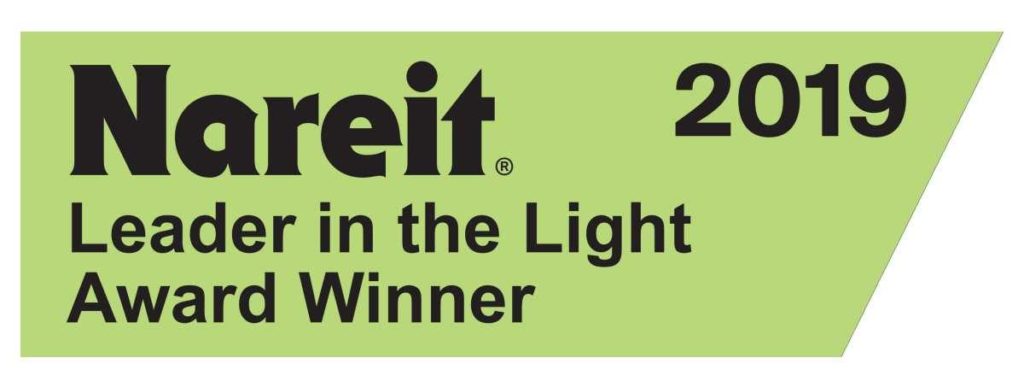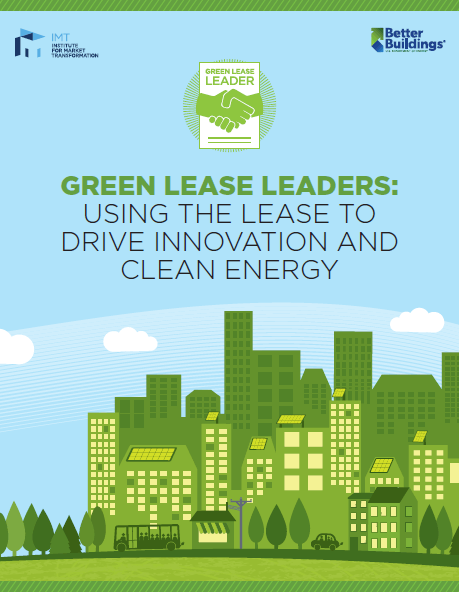
Public real estate investment trusts (REITs) have a major impact on the cities and communities where we live and work. Their footprint is vast, with more than 520,000 owned properties and $3 trillion in combined real estate assets that collectively support 2.3 million jobs. The prevalence of REITs in the U.S. means it’s important for them to put a premium on energy efficiency and sustainability. And, as more cities pass ambitious climate policies while investors simultaneously demand that companies change business practices to lower climate risks, it would benefit every REIT to take a page or two from Nareit’s Leader in the Light Award winners’ playbooks.
Leader in the Light candidates are judged in part by their results from the Global Real Estate Sustainability Benchmark (GRESB) Annual Survey, which must be included in all applications. GRESB’s Annual Survey requires companies to disclose a broad range of Environmental, Social, and Governance (ESG) factors across their portfolios such as energy and water usage, GHG emissions, and waste, as well as a wide range of social and governance metrics. It is a closely watched benchmark among many of the world’s largest institutional investors, who use GRESB data and analytical tools in their investment management and engagement processes to evaluate risks and returns.

Last week, Nareit presented its annual Leader in the Light Awards for achievement in sustainability at its REITworld 2019 Annual Conference in Los Angeles. As noted in Nareit’s press release, 10 REITs and one individual received awards for producing superior, measurable results from the implementation of sustainable business practices. I was thrilled to be a judge for this year’s awards. Having the opportunity to review this year’s impressive applicants gave me some insights into the most innovative actions REITs are taking when it comes to ESG. Below are five takeaways I’d like to share.
5 Important Sustainability Trends REITs Need to Know About
1. REITs are setting aggressive savings targets
A growing number of REITs, including four Leaders in the Light recipients (Prologis, Host, Kilroy, and Avalonbay Communities), have established approved science-based climate targets. Boston Properties, which is in the process of setting its own science-based targets, is on track to achieve aggressive energy, greenhouse gas, and water reduction, as well as waste diversion goals. By the end of 2018, Boston Properties had reduced energy use intensity by 24%, water use intensity by 25% and greenhouse gas emissions intensity by 39% below 2008 baselines.
2. Green leasing remains critical to REIT success on ESG
As REITs aim to meet more ambitious climate goals, landlord-tenant collaboration around sustainability in leased space will be a necessary step. Green lease agreements provide both parties a win-win blueprint to ensure costs and benefits of ESG investments are shared equitably throughout the life of a lease. One example of green leasing in action is Kimco Realty Corporation (Kimco), which is showing leadership in the way that it views its role in interacting with its tenants. “I like to think of a green lease as a greener contract with your tenant. And what I mean by that is specific provisions in that document that help to move the ball forward with respect to sustainability and sustainable investments,” said Kimco’s Will Teichman in an interview with Nareit’s Matt Bechard. This is a standout activity for the leader in the retail space and serves as an example for other sectors as well. Kimco along with five other Leaders in the Light recipients — Boston Properties, Digital Realty, Hudson Pacific Properties, Kilroy Realty, and Prologis — have all been recognized by IMT and the U.S. Department of Energy’s Better Buildings Alliance as Green Lease Leaders.
3. ESG reporting has gone mainstream
According to Nareit’s ESG Dashboard, most REITs are now reporting their sustainability efforts publicly, with the percentage growing year over year. In 2018, 66 of the top 100 REITs (representing 79 percent of the total market capitalization) reported publicly on their ESG efforts. Of the three most widely used voluntary ESG reporting frameworks by REITs (GRESB, CDP, and GRI), GRESB had the highest participation rate within the companies included in the ESG Dashboard, representing 53 percent of the market cap of the top 100 REITs.
4. REITs are launching innovative technology pilots
REITs are beginning to dedicate resources to testing innovative energy solutions and technology. Last year, the Kilroy Realty Innovation Lab executed three pilot projects to test and share results with its peers. First, Kilroy installed Evaporcool, a precooling HVAC technology, in nearly one million square feet in Long Beach that decreased energy demand by 188kW and had a 37% projected annual ROI. Kilroy also deployed Nanotint, a spray-on window film, in a West Hollywood building that yielded annual savings of 327,000 kWh and had a 41% ROI. Lastly, Kilroy installed new battery storage, interconnecting four projects in 2018 that had a total capacity of 1.6 megawatts and will yield approximately $60,000 in annual energy savings.
5. Health and wellness strategies are being integrated with energy efficiency solutions
REITs are demonstrating that actions taken by landlords and tenant companies to improve energy efficiency should have a symbiotic relationship with occupant health in tenant spaces to have the most positive impact. Inefficient buildings are bad at regulating temperatures, sluggish in providing fresher air to breathe, and generally uncomfortable and less healthy to work and live in. That’s why Leader in the Light recipients such as Vornado, Prologis, Kilroy Realty, and Boston Properties have taken actions to get buildings certified as healthy by established rating systems such as WELL or Fitwel.
Host Hotel‘s 1 Hotel South Beach was designed with biophilic design principles for both environmental and human health purposes, and features a 3,000 square foot (sq. ft.) green wall with nearly 12,000 plants. At Host’s Orlando World Center Marriott, a 1,500 sq. ft. hydroponic system grows lettuce, fruits, and herbs on site. With the capacity to grow up to 25,000 plants, the hydroponic system uses 90% less water than traditional farming methods.
I congratulate this year’s Leader in the Light recipients and look forward to seeing what companies will emerge next year as sustainability champions. IMT is pleased to work with several of the Leaders, including on leasing, building performance policies, utility data access, and connecting building efficiency and sustainability to property value and to investment and operational decisions. We hope to continue to contribute to their success and the success of others in the field in fighting climate change and realizing the many benefits of high-performing buildings for themselves and their communities.
To learn more about this year’s Leader in the Light awards, read Nareit’s press release and check out its blog, ESG Spotlighted at REITworld.


